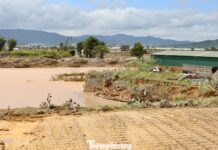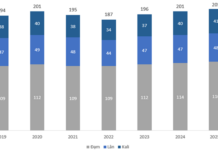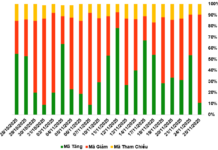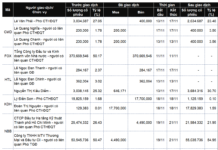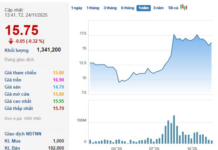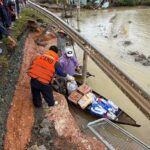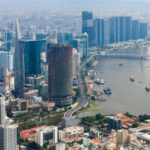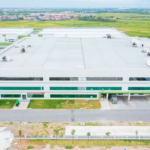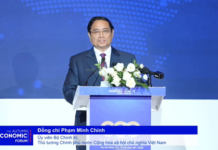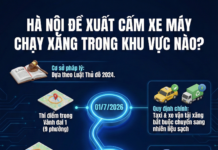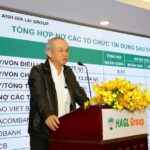Accordingly, the budget does not have to bear 100% of the capital, with an expected payback period of just 30 years instead of over 140 years. The construction time is reduced from 10 years to 5 years, thereby boosting economic growth and enhancing the quality of life and convenience for citizens.
Public Investment and PPP: Budget Risks Losing Tens of Billions of USD
– The North-South High-Speed Railway is a strategic infrastructure project, yet its investment model remains undecided. Many argue that the project’s scale is too large, and only public investment can sustain it. What is your perspective?
Economist Vũ Đình Ánh: That argument is flawed. If funded through public investment, the budget must cover 100% of the capital, and this investment is unlikely to yield a profit, as the project is almost certainly loss-making. Current calculations suggest a payback period of up to 140 years, or even no payback at all, as operational, maintenance, and repair costs could add tens of billions of USD in the coming years.
This is a lesson from many countries worldwide, placing significant pressure on public debt and national credit ratings. “For the North-South High-Speed Railway, direct private investment is the optimal choice compared to public investment or public-private partnerships (PPP),” Mr. Vũ Đình Ánh emphasized.
– Can you elaborate on the shortcomings of public investment in this context?
Absolutely. Beyond the issues mentioned, the effectiveness of public investment remains a concern. Although we have made significant improvements, long-standing weaknesses persist, such as complex procedures, slow disbursement, cost overruns, and project delays.
For a nationally strategic and high-tech project like the high-speed railway, these inefficiencies could significantly inflate the total investment, extend timelines, and cause economic opportunities to be missed.
 Demo design of the high-speed railway. |
– Is PPP a more balanced solution, where the government and partners share responsibilities?
PPP may seem balanced, but in practice, it often leads to conflicts of interest between parties, and Vietnam currently lacks adequate mechanisms to resolve these conflicts.
Specifically, for the North-South High-Speed Railway, the issue is even more significant. Regulations require private investors to mobilize a minimum of 30% of the capital. Given the total investment of over 60 billion USD, this 30% is an enormous sum that no single enterprise can raise.
In reality, PPP is suitable for projects with strong commercial cash flows, such as BOT highways, seaports, and airports, where investors can recover their capital. However, high-speed railways are different. Private investors must raise substantial capital, but ticket revenues will not cover costs, while maintenance over the project’s lifespan could add tens of billions of USD.
No enterprise would risk tens of billions of USD just to be a “partner.” To attract investors, the government might have to guarantee profits, which would shift the risk back to the state.
“Direct Investment Offers Tangible Benefits for the Economy”
– What distinguishes the direct investment model?
This is the only model I find suitable for Vietnam’s context. Under proposals from some enterprises registering for direct investment, the government would lend 80% of the capital, with private investors contributing 20%.
Crucially, the government would fully recover the 80% loan within 30 years, with no loss. In contrast, with public investment, the budget not only covers 100% of the capital but also lacks any basis for expecting a return on this investment.
– Some argue that this model shifts all risks to the government. What is your take?
The reality is the opposite. When private entities directly execute and operate the project, they are motivated to work quickly, optimize costs, and innovate to achieve long-term efficiency, while timelines are shortened. The government retains oversight and approval roles without bearing the costs of overruns, delays, or prolonged operational risks, as seen in public investment. This is evident in recent record-breaking projects like the new National Exhibition Center.
I have the same confidence in the North-South High-Speed Railway. For instance, VinSpeed has committed to completing the project in 5 years instead of 10, reducing the payback period from 140 years to 30 years, as initially calculated by authorities.
The high-speed railway is not just a transportation project but a foundational infrastructure that could reshape Vietnam’s economic structure for decades. Choosing this model allows us to develop a high-speed rail industry without direct investment. Therefore, the sooner it is completed, the greater the socio-economic benefits.
– There are concerns that offering 0% interest loans for 30 years is overly favorable to businesses. How do you address these concerns?
Interest-free loans are the minimum condition for the project’s financial viability. Businesses already need to self-fund tens of billions of USD for equipment over those 30 years, and adding interest would make the project unsustainable. In that case, the usual scenario is that the government would either have to undertake the project itself at great cost and over many decades, or the project would remain on paper.
– In summary, what is your overall view on the investment model for this project?
If Vietnam aims to seize growth opportunities, narrow the development gap, and ascend to a new level of industrialization, direct investment with strong private sector participation and government support in capital arrangement is the most feasible path to ensure project implementation and deliver tangible benefits to the economy.
– Thank you, Mr. Ánh!
Tâm An
– 20:38 24/11/2025
Unlocking Billion-Dollar Industries: 5 Key Sectors Urge Congress to Remove Barriers
Representatives from five multi-billion-dollar industry associations (rice, coffee, pepper, timber, and seafood) have jointly submitted a formal document to the National Assembly addressing concerns related to VAT (Value-Added Tax).
Unleashing Ho Chi Minh City’s Potential for Breakthrough Growth
After two years of implementing Resolution 98/2023, Ho Chi Minh City urgently requires amendments and additions to establish a superior legal framework.

